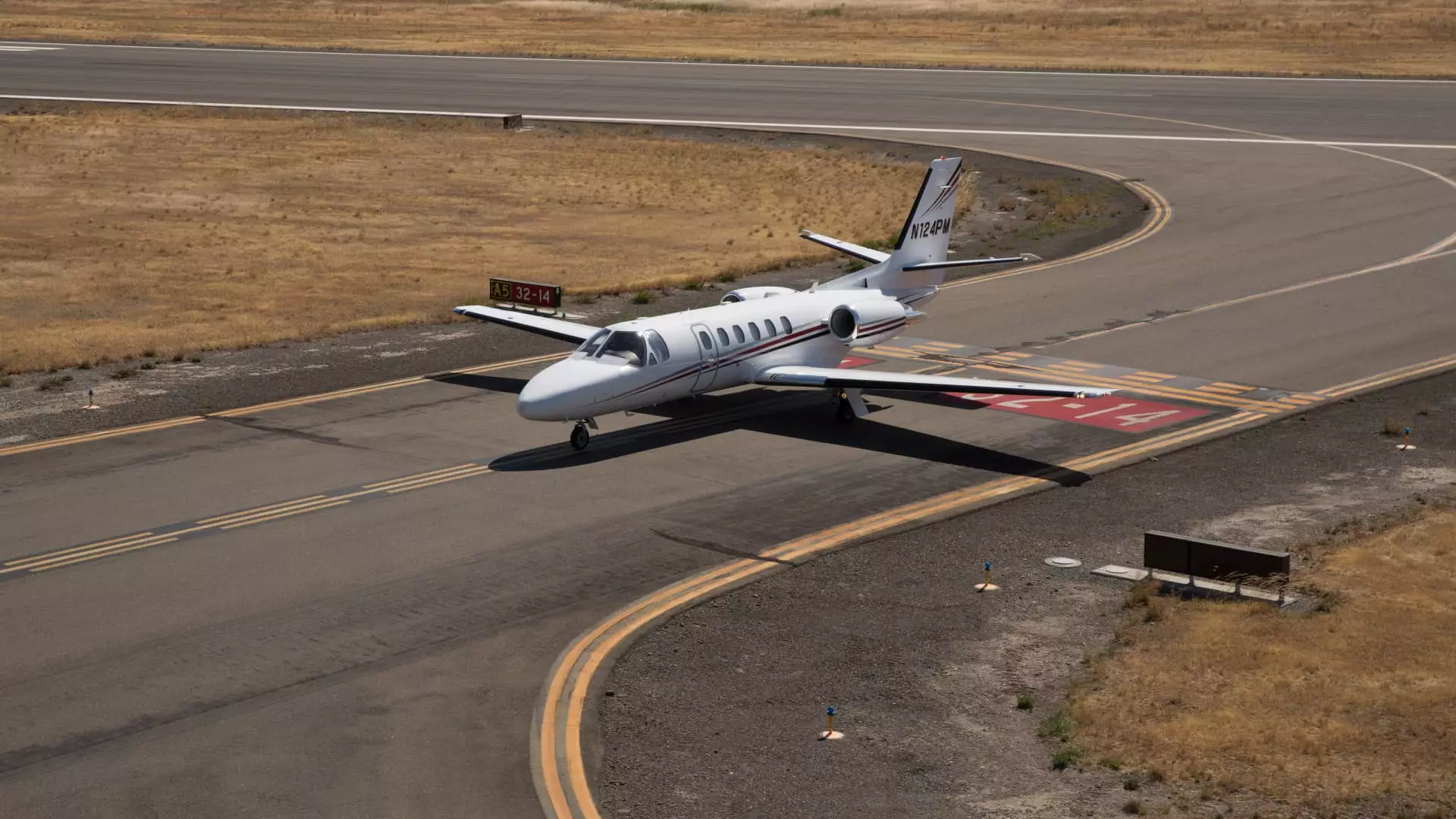In a disconcerting turn of events, the world of business aviation is witnessing an alarming decline in demand, exacerbated by a broader downturn in consumer confidence. Recent insights from Barclays’ Business Jet Indicator survey reveal a staggering 49% decrease in customer interest for purchasing business jets since March. This finding, derived from responses of 65 industry professionals, paints a grim picture of a market that is not only sluggish but potentially teetering on the edge of a significant downturn.
The survey, capturing sentiments between April 9 and 15, identified a dip not just in demand, but across almost every metric evaluated—sales outlook, pricing, and even customer engagement. This composite score plummeted from a relatively stable 52 to a concerning 40, a drop of 23% that marks the worst performance recorded by Barclays since the upheaval caused by the COVID-19 pandemic. Such a decline raises red flags for the entire industry, especially when paired with the acknowledgment that a score in the low 40s signals a contracting market.
The Severity of the Situation
Barclays analyst David Strauss’ commentary on the survey underscores a bleak reality: while a decline in sentiment was anticipated, the scale of this downturn caught even the most seasoned insiders by surprise. With a composite score suggesting that new order values are lagging behind what manufacturers are currently fulfilling, it becomes evident that this slowdown will have repercussions further down the supply chain. The airplane manufacturers’ book-to-bill ratio—a crucial indicator of a manufacturer’s financial wellbeing—is telling a story of stagnation that could threaten the livelihoods of many within the sector.
What’s even more telling is that nearly half of the survey’s participants—46%—reported a deterioration in customer interest post-March. This reveals an unsettling lack of faith from potential buyers, which in turn compounds the existing challenges faced by manufacturers silently grappling with dwindling positivity in their order books. Customers’ reluctance to commit isn’t arbitrary. Many cite apprehensions surrounding tariffs impacting not only the jet market but their operational businesses as a whole.
The Tariff Dilemma
It’s no surprise that tariffs emerge as a significant concern for industry stakeholders. According to the survey, a staggering 93% of respondents believe tariffs will adversely affect new aircraft demand. Such widespread pessimism feeds into a prolonged cycle of hesitation and reluctance, as financial commitments in uncertain times often lead to caution rather than risk-taking. While the motivations for these concerns are multifaceted, it’s evident that the overarching sentiment in the current landscape is one of worry.
Conversely, when examining the market for used jets, a slight glimmer of hope appears as only 67% of participants anticipated a negative impact on demand. Roughly a third expressed optimism that used jets might see some increase in demand; however, such optimism feels tenuous at best. The eventual rebound is constrained by deeply rooted fears tied to economic instability and persistent apprehensions over tariffs.
Legislative Lifelines and Future Prospects
Yet even amid this turmoil, potential legislative movements present a lifeline for manufacturers. The extension of the Tax Cuts and Jobs Act (TCJA), which enables businesses to fully deduct significant equipment purchases, offers a potential spark to reignite interest in the aviation sector. With Republican lawmakers appearing to push back to the original full deduction available through the TCJA, business jet manufacturers might find some relief, assuming this legislative push gains traction.
However, what remains critically important is the market’s reaction to such changes. If new tax incentives are not perceived as robust enough to offset the negative impacts of tariffs, businesses may remain cautious, prolonging the stagnation already felt across the industry. The outcome will ultimately depend on a delicate balance between legislative change and innate consumer confidence.
As the business aviation sector navigates through these turbulent winds, it has become urgent for stakeholders to flexibly adapt to rapidly shifting sentiments and expectations. Nonetheless, with a staggering 49% drop in interest for business jets, it’s clear that the industry stands at a precipice, one that demands innovative responses to complex, layering challenges.

